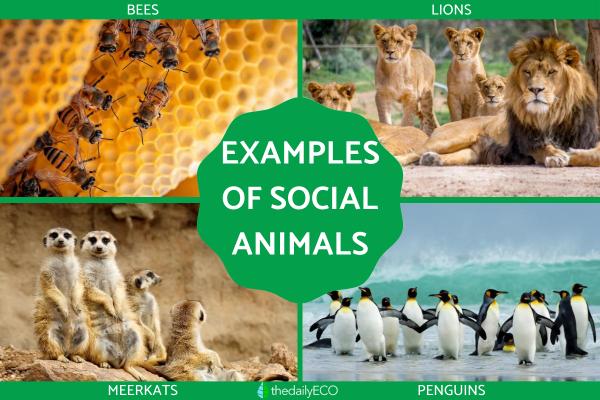
Social animals are those which establish lasting and complex bonds with other members of their species. When they do this, they eventually create a society. Different dynamics exist within these societies, but there are common behaviors such as sharing resources and providing protection. While all animal species will need to come together for certain behaviors such as reproduction, some are much more solitary. Not all animal societies are the same and they depend on various factors such as the dynamic between sexes. We explore more with thedailyECO as we look at these types of animal societies and examples of social animals in nature.
What are social animals?
Social animals are those that establish lasting and complex bonds with other members of their species, forming a recognizable society. Most animals display some degree of sociability, such as interactions during the reproductive season or parental care behaviors. Even solitary animals will meet for these purposes. Social animals differ in that they exhibit an advanced level of organization within a given population and form stable groups.
An extreme example of sociability is found in eusocial insects such as bees, ants and termites. These insects form highly structured societies in which each individual fulfills a specific role within the colony. Not all social animal groups are as highly organized. Types of social animals include:
- Eusocial societies: in these societies, the offspring are cared for by everyone in the society. Different generations live within the same colony at the same time and various types of labor are divided by different individuals and groups.
- Hierarchical societies: there is a ranking of positions and roles within the animal society. Dominance often determines how resources are shared.
- Fission/fusion societies: flexible societies where the composition of groups changes with relative frequency. They are more dynamic than eusocial societies and less predictable.
- Polygynous societies: also known as a harem animal society, a single dominant male maintains control over a group of females. They are considered a form of reproductive monopoly.
- Matriarchal societies: the social structure is based around a female leader who is usually older. Females tend to cooperate more and males may leave the group after they have matured.
- Cooperative breeding societies: various members within the social group take over the care of young, including non-breeding individuals.
- Colonial societies: large numbers offer better protection and will often live close together during the breeding season.
Now we know the types of animal societies to which social animals belong, we can see some examples of social animal species below:
Hymenoptera
Not a single species, Hymenoptera is an order of insects which includes bees, wasps and ants. These insects are eusocial animals and represent one of the most common examples of this type of animal society in nature. The structure of these animal societies is such that there is a clear division of labor and specialized functions among group members.
The colony is usually founded by one or more reproductive females known as queens. Most of its members are sterile females known as workers. They are responsible for tasks within the hive, such as feeding the larvae, defending against threats and maintaining the hive's structural integrity. Male drones have the sole purpose of matin with the queen.
Individual colonies or hives are usually made up of two generations and range from a few to thousands of individuals. You can learn more about a specific hymenopteran animal with our guide to the anatomy of an ant.
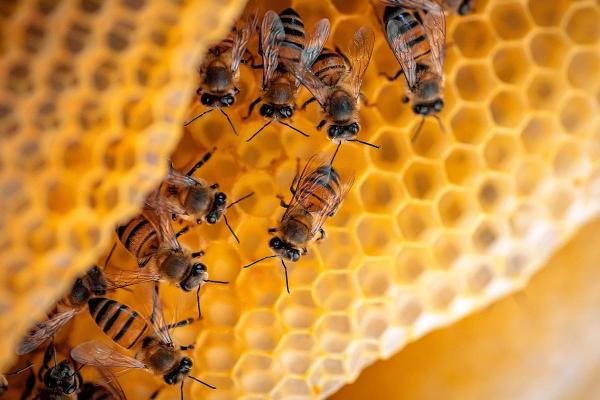
Wolves
Also known as gray wolves, wolves (Canis lupus) are one of the most studied animals for investigating behavioral relationships within social groups. A pack typically consists of a breeding pair and their offspring of different ages, functioning as a family unit. It was believed that alpha males and females controlled the pack through competition, but recent studies suggest conflict is less important and the hierarchy is more stable than previously thought.
The wolf social structure is highly cooperative. All members participate in hunting, territory defense and raising of the young. Communication between them is essential and occurs through vocalizations, body postures and olfactory signals. This cohesive organization allows the pack to operate efficiently, which is key to their collective survival. There may be some variances between the different types of wolves in terms of social order.
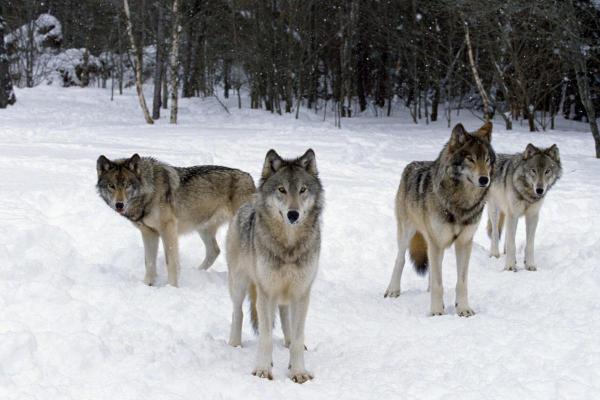
Lions
While domestic cats live in colonies in the wild, they are considered relatively solitary animals. Lions are another type of felid, but they display a highly social behavior and live in groups known as prides. Each pride is usually composed of related females and their young, accompanied by a group of males. Males may mate with adult females in the group and leave the pride on their own initiative or even be expelled.
Tasks within the pride are well distributed. Females are primarily responsible for hunting, acting cooperatively to bring down large prey. Males defend the territory and provide protection from potential predators. This social organization especially favors the survival of the young.
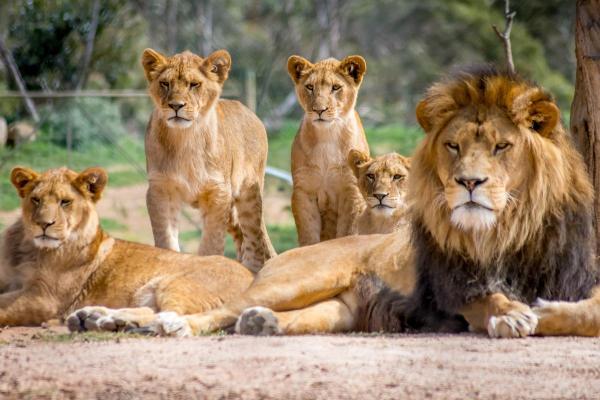
Primates
It should not be surprising that primate animals form complex group structures, considering the fact we are one of them. These fission/fusion societies include affective bonds, hierarchies, cooperation and competition. Chimpanzees (Pan troglodytes) live in communities that can exceed 100 individuals organized in a male-dominated hierarchy. On the other hand, gorillas (Gorilla spp.) usually form smaller social groups led by a dominant male called a silverback. The silverback protects and directs the group, which is composed of several females and their offspring.
Another example within primates are mandrills (Mandrillus sphinx). They live in large groups, sometimes composed of hundreds of individuals. Mandrills have a strict hierarchy where dominant males have more reproductive opportunities. Group life allows these primates to cooperate in the search for food, protect each other and transmit cultural knowledge, among other benefits.
Learn more about these mammals with our article asking what are primates?
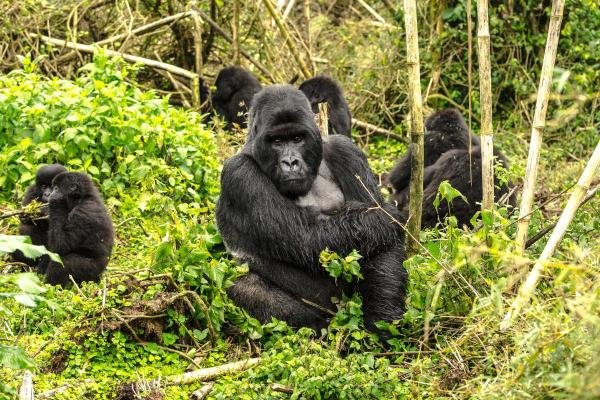
Peccaries
Peccaries (family Tayassuidae) are American ungulates that live in stable social groups. Examples of these species are the collared peccary (Pecari tajacu) and the white-lipped peccary (Tayassu pecari). The former usually form smaller groups, while the latter can form herds of hundreds of individuals. A group of peccaries that travel and live together is called a squad Peccaries rely on their social structure to defend their territory, protect themselves from predators, regulate their body temperature and interact with other members of the species. Peccaries are an example of hierarchical social structures in animals.
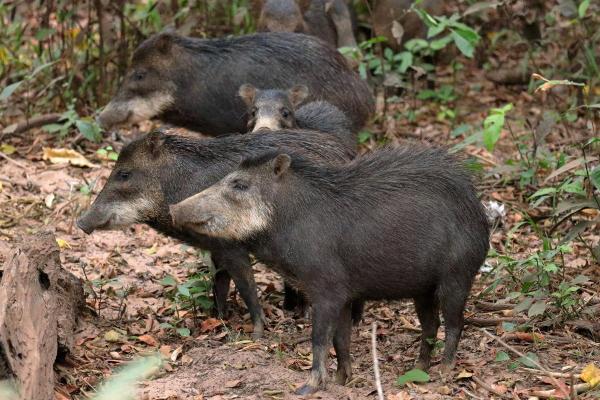
Meerkats
Meerkats (Suricata suricatta) are small, diurnal and highly social mammals that live in structured groups of up to 40 individuals, called mobs or gangs. They are territorial animals and cooperate in various tasks such as guarding, feeding, burrowing and caring for young. This makes them a type of cooperative breeding society.
One of the most striking characteristics of meerkats is their complex defense strategy against predators such as eagles and jackals. This behavior includes specific alarm calls, constant vigilance from high positions, active group defense and dedicated protection of the young. This coordinated cooperation demonstrates a high level of social organization in which each individual plays a key role in the group's survival.
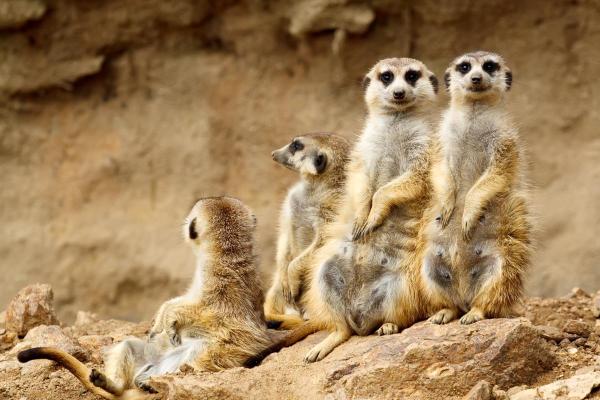
Parrots
Some species of parrots form highly complex social groups. This is the case with the monk parakeet (Myiopsitta monachus) which often build communal nests at the highest available height, usually in trees such as those of the genus Eucalyptus. Unlike many other species of Psittaciformes, parakeets build their own nests from branches. A single nest can house dozens of breeding pairs. Cooperation is not limited to building. Parakeets also alert each other to the presence of predators, groom each other and maintain strong social bonds.
Learn more about avian social groups with our article asking how are birds classified?
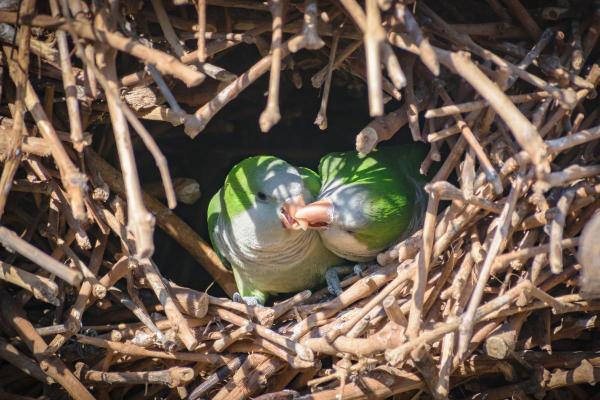
Penguins
Penguins are marine-adapted birds characterized by their gregarious behavior. They gather in large colonies where they build their nests, lay their eggs and raise their chicks, making them examples of colonial animal societies. Since they cannot fly and have limited mobility, their colonies are usually located near areas with high marine productivity. This better ensures a constant source of food.
In addition to facilitating reproduction and caring for young, social life allows penguins to cope with harsh environmental conditions. When temperatures drop, they engage in a behavior known as huddling. Individuals group together and rotate locations continuously, allowing everyone to shelter from the cold in the center of the group.
Learn more about how different animals protect themselves against the cold with our article on the rules of thermoregulation in animals.
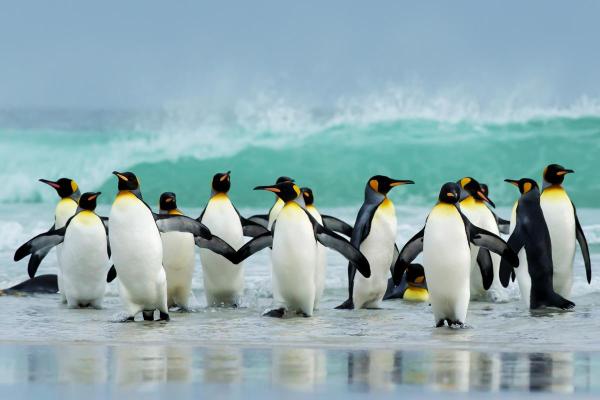
Elephants
Elephants live in matriarchal societies which are composed of family groups led by the oldest female. These groups are composed primarily of females and their offspring, while males often leave the group or live alone when they reach sexual maturity.
Group life allows elephants to cooperate in searching for food and water, protect each other and pass on knowledge essential for survival. Some studies show that social support within the group can mitigate the suffering of orphaned elephants after the loss of their mother. This finding underscores the importance of emotional bonds in reducing stress and improving the emotional well-being of these animals.
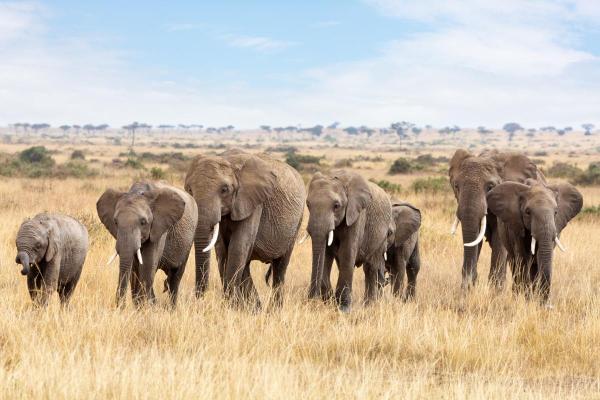
Orcas
So far, we have looked exclusively at terrestrial social animals, but orcas (Orcinus orca) are marine mammals that live in stable family groups. These groups are organized matrilineally, meaning offspring are structured around the maternal line.
Orca calves remain with their mothers for life, forming lasting bonds and cooperating in various group activities. Cooperation is key, especially for hunting where they employ coordinated group strategies. They use a sophisticated communication system based on specific vocalizations that facilitate socialization and coordination between individuals.
You can discover more about these dolphins with our article asking are killer whales dangerous to humans?

If you want to read similar articles to Examples of Social Animals, we recommend you visit our Wild animals category.
- Secrets for Telling Foundation. (n.d.). Animals: Social Beings. Secrets for Telling.
https://secretosparacontar.org/tema_contenido/los-animales-seres-sociales/